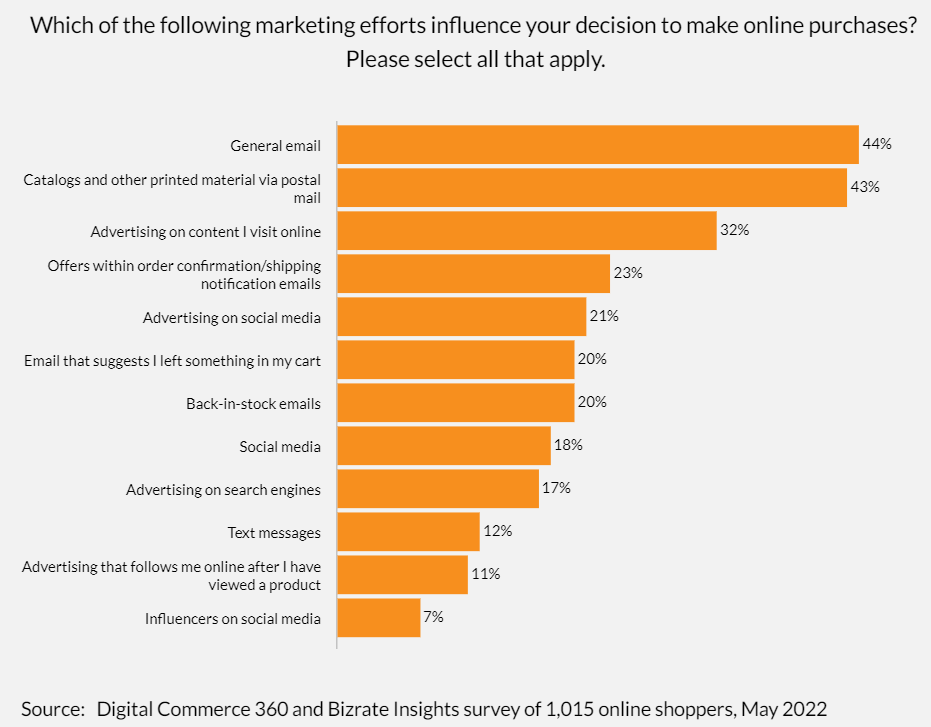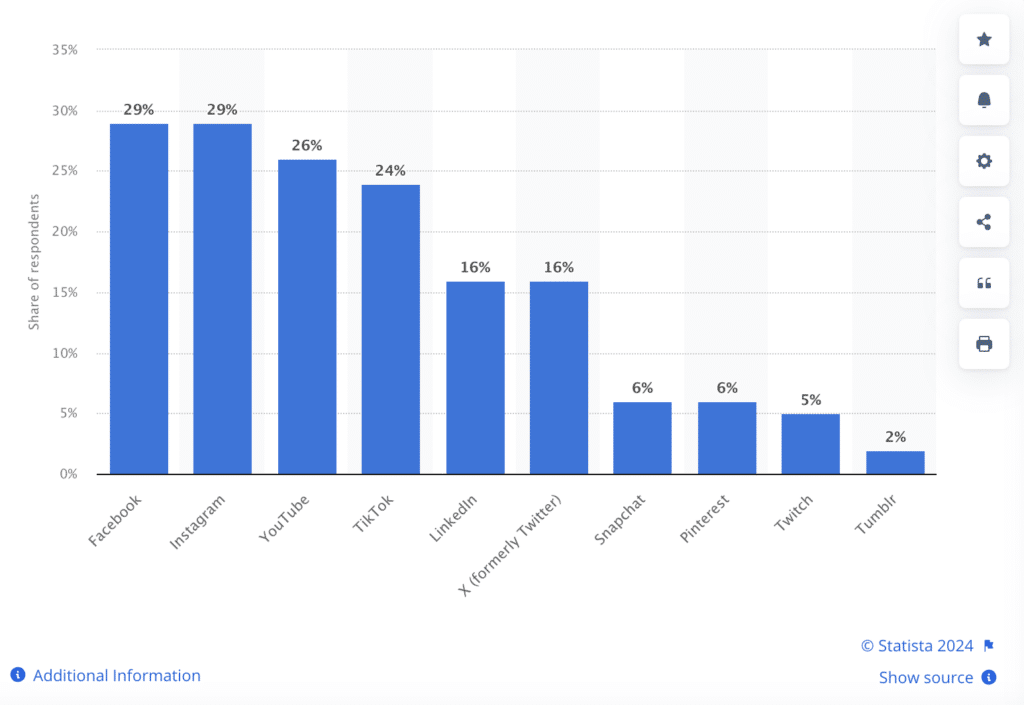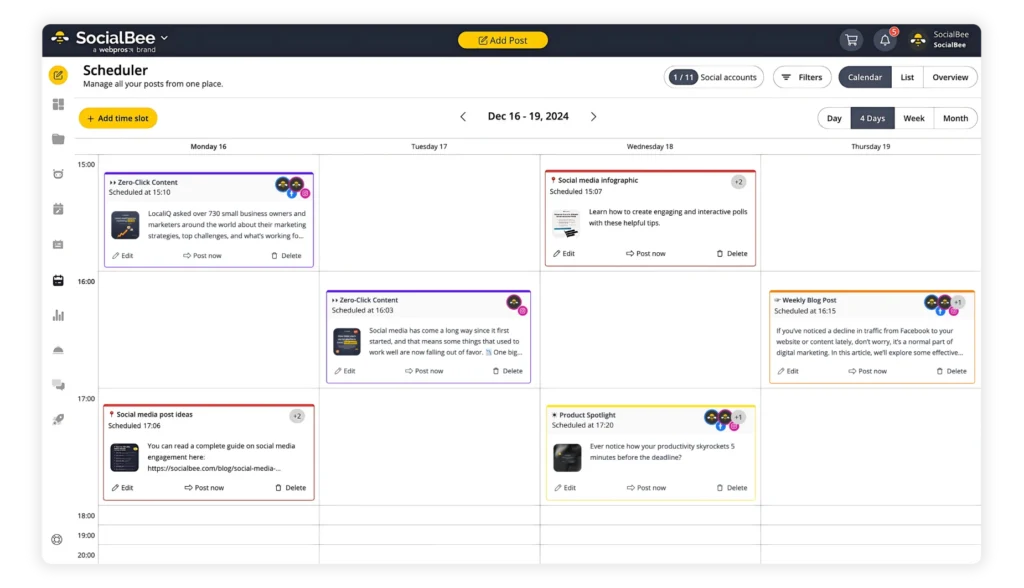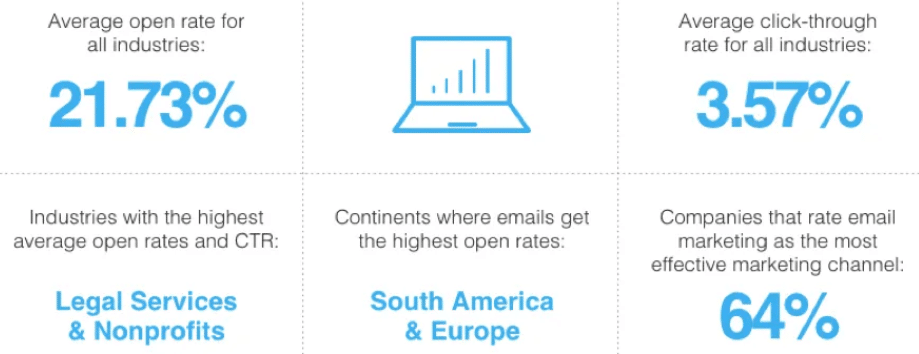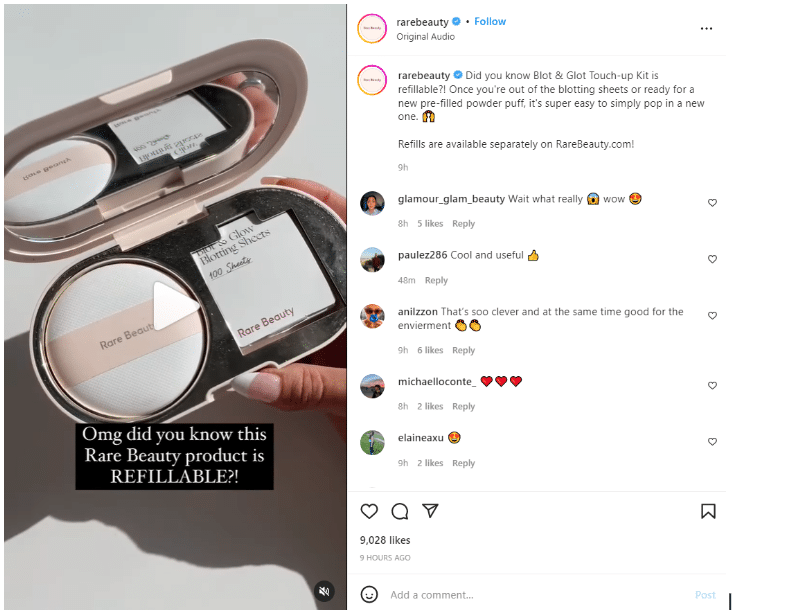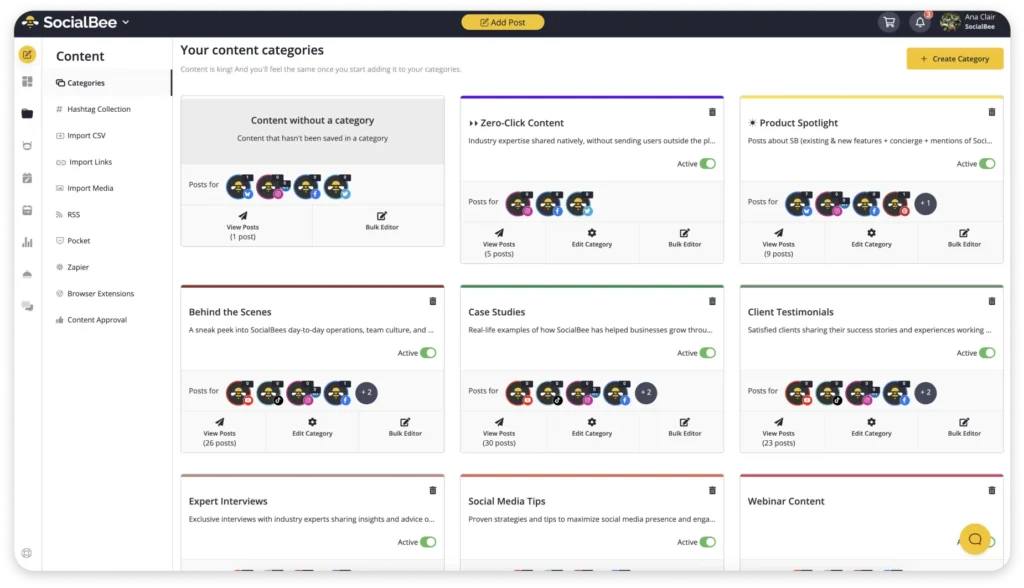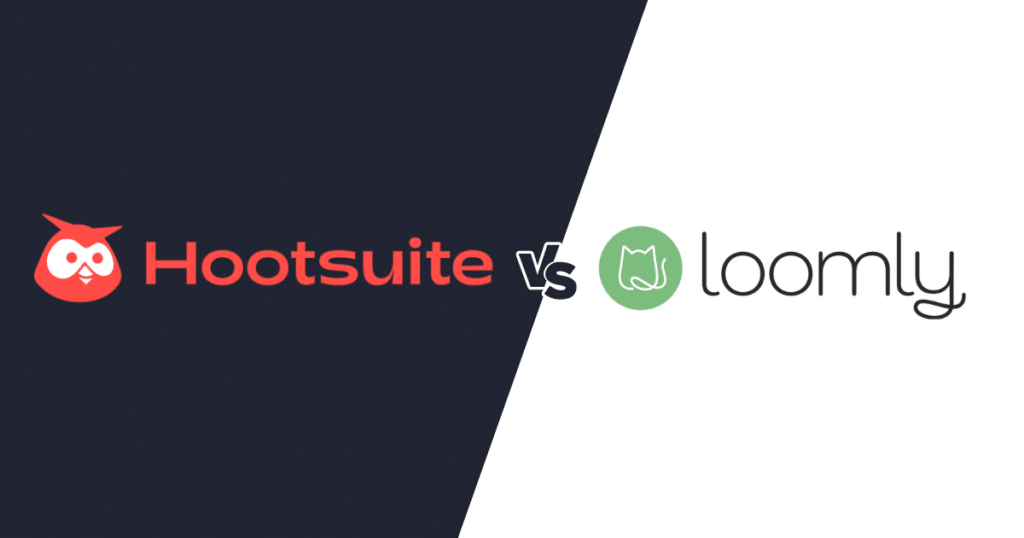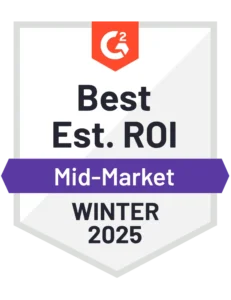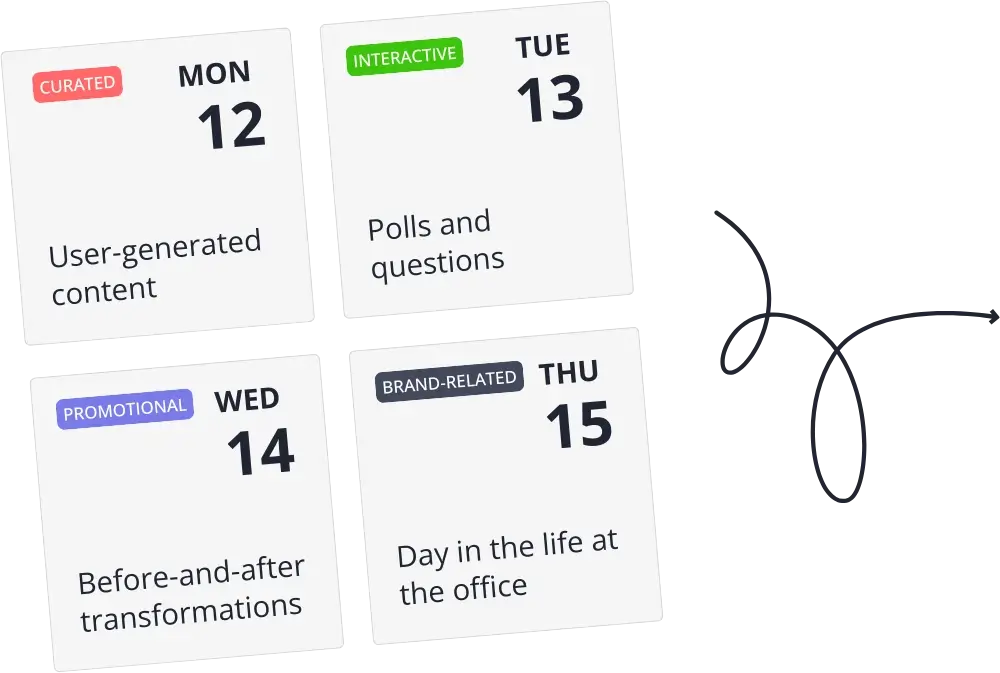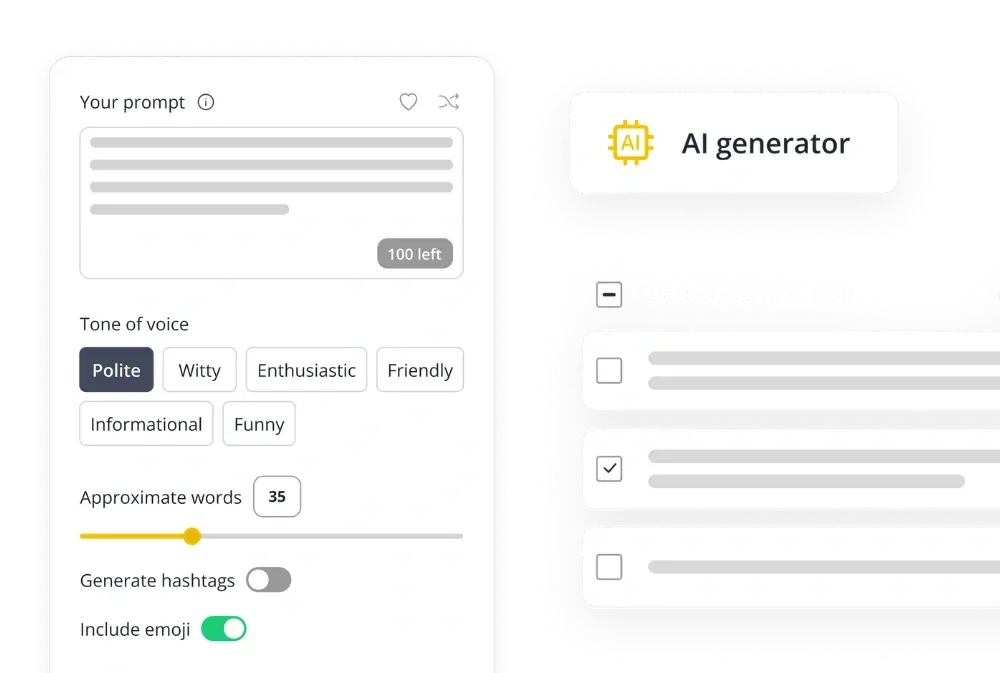
Guest Author
Email marketing vs social media: which marketing channel offers the best return on investment?
Over the past few years, social media has become the go-to choice for many marketers. It’s easy to see why, as it allows brands to reach a wider audience and engage with them directly. However, email marketing shouldn’t be overlooked. It’s praised for its exceptional ROI and highly personalized approach. In fact, in 2023, about 52% of marketing professionals reported doubling their ROI from email campaigns.
So, if you’re trying to decide between the two, you’re not alone. Should you choose email marketing for its incredible ROI and targeted personalization? Or should you go with social media for its extensive reach and engagement opportunities?
In this guide, we’ll explore both options, highlighting the strengths and weaknesses of each. Plus, we’ll share practical tips on how to make the most out of each channel—and, most importantly, how to combine them for maximum impact.
Short Summary
- Email marketing generally gets you more money for what you spend—about $36 for every dollar compared to about 29% return from social media like Facebook and Instagram.
- Social media is great for quick interactions and reaching lots of people fast. Email, however, lets you talk directly to your intended audience, which is great for specific messages.
- Email is better at getting sales, up to 40 times more than social media because you can tailor messages to fit exactly what your audience wants.
- Social media content must be engaging and interactive to cut through the noise, whereas email content focuses on personal relevance.
- It’s advised to use social media to get your brand out there and attract new followers, then use email to keep those relationships going strong with more personalized communication.
What Is the Difference Between Social Marketing and Email Marketing?
Social media marketing is great for reaching a broad audience, with about 52% of online brand discovery coming from social media platforms, making it excellent for brand awareness. Meanwhile, email marketing targets a subscribed audience and generates 40 times more sales than social media, making it great for conversions.
Bottom line: While social media boosts awareness, email marketing strengthens relationships and drives sales.
Email marketing and social media marketing are both key strategies for targeting your audience and boosting sales. It’s not that one of them is better than the other. But each of them comes with its strengths and weaknesses.
So, choosing the best strategy for your business requires careful evaluation of your goals. To help you through this process, we’ll compare email and social media in key areas, along with the best ways to benefit from both channels.
1. Email Marketing vs Social Media: ROI and Conversions
TL;DR: In email marketing, for every $1 you spend, you get $36 back on average. This is because emails can be personalized and sent directly to potential customers. However, there are challenges like making sure your marketing emails actually get delivered and improving response rates.
On the other hand, the return on investment (ROI) varies depending on the social media platform. Facebook and Instagram tend to have the best ROI at around 29%. You can use paid ads to get more conversions, but it’s also important to post organic content to reach and engage with potential customers, turning them into loyal followers.
A. Email Marketing ROI & Conversions
Email marketing seems to perform better in terms of return on investment (ROI) compared to any other marketing platform. Marketers get $36 in return for every dollar they spend on their email campaigns.
There are many reasons behind this impressive number.
Perhaps the most important is that email is one of the most cost-effective solutions to target a large volume of subscribers. There are a variety of affordable email marketing software available that allows you to create, automate, and analyze personalized email campaigns to effectively target and engage your target audience.
The ability to segment your email list and tailor your emails to each group’s needs is one of the main reasons behind increased conversion rates in email marketing. As shown in the graph below, email marketing is the most influential factor in driving online purchases, according to a survey of 1,015 online shoppers conducted by Digital Commerce 360.
Email Marketing Campaign Challenges & Solutions
The challenge with email conversion rates goes hand in hand with email deliverability. Poor deliverability means fewer people can see your content. So, you need to stay aligned with best deliverability practices, such as creating high-quality content, optimizing for mobile, and avoiding spam-triggering tactics.
Another factor that could result in missed conversion opportunities is email’s static nature. You can’t control when recipients will read your emails. To turn things around for your email marketing campaigns, mind your response times and provide useful links to potential queries within your email content. Instant support and information should be an integral part of your email marketing, especially for time-sensitive promotions.
B. Social Media Marketing: ROI and Conversions
Calculating social media ROI is a challenging task, mostly because of the number of different platforms available. That’s why it’s easier to measure each platform’s ROI separately.
According to Statista, the social media platforms with the best return on investment (ROI) are Facebook and Instagram (both 29%), followed by YouTube (26%) and TikTok (24%).
The key to social media success is to have an active presence on the platforms where your audience hangs out. For instance, it makes more sense for a B2B company to invest in LinkedIn prospecting compared to a B2C.
Tracking conversions on social media gets tricky. Users may navigate through various steps before making a purchase, which results in gaps in conversion tracking. To improve tracking conversions on social media, use UTM parameters in your social media links to track user activity and analyze the data in Google Analytics. This will help you track your social media followers across different steps and fill in gaps in conversion tracking.
If you’re going to spend on paid ads, social media is a great choice. In fact, social media ads are the top way people aged 16-24 discover new brands. Plus more people find new brands through social media ads than through word-of-mouth, websites, or review sites.
However, consistent organic posting on social media is crucial because it keeps your brand visible and engaged with your audience. When you regularly share content, you stay top-of-mind for your followers, increasing the likelihood of them interacting with your posts, visiting your website, and ultimately making purchases.
Social media provides a direct way to communicate with your customers. It allows you to present your products or services, address their needs, and build lasting relationships. Social media management tools like SocialBee help streamline this process, ensuring you stay active across platforms without using too much of your time.
Finding the time to regularly engage with your audience, and create and share content can often feel overwhelming. This inconsistency can mess with your brand’s growth and visibility.
With SocialBee, you can create, schedule, and reshare your best posts from one place. Our AI features help you generate on-brand content in seconds. Plus, our unified inbox collects all your comments and messages from different platforms in one place, so you don’t have to keep switching apps to reach or interact with your customers.
Manage your entire social media presence from one place: SocialBee.
2. Email Marketing vs Social Media: Audience Targeting and Reach
TL;DR: Email marketing provides a direct way to reach subscribers who’ve opted in, ensuring personalized communication. Its limitation, though, is that its reach only extends to the size of your email list.
Social media marketing, on the other hand, offers access to a vast and varied audience globally, taking advantage of the extensive time users spend online. However, social media algorithms can sometimes restrict how many people actually see your posts. Combining both strategies can be effective, using social media to grow your audience and email to maintain targeted, direct communication.
A. Email Marketing: Audience Targeting and Reach
Can you guess the biggest advantage of email marketing? That’s owning your email list. No algorithms are affecting your metrics and hiding your content from recipients. If you comply with key email regulations and follow the best deliverability practices, your emails will reach your subscribers’ inboxes.
However, the extent of your reach is limited to the number of email addresses you manage to collect from your audience.
In email marketing, there are specific metrics that help you measure your email reach including:
- Number of subscribers: How many people are on your email list.
- List growth rate: How fast your email list is growing.
- Unsubscribe rate: The percentage of people who leave your email list.
- Open rate: How many people open your emails.
- Click-through rate (CTR): How many people click on links in your emails.
Not all industries have the same open and click-through rates, though.
Here are some interesting email marketing facts:
- Average open rate for all industries: 21.73%
- Average click-through rate for all industries: 3.57%
- Industries with the highest average open rates and CTR: Legal Services & Nonprofits
- Continents where emails get the highest open rates: South America & Europe
- Companies that rate email marketing as the most effective marketing channel: 64%
Considering the average email open rate, if you have 1,000 recipients, you can expect 217 of them to open your emails. The catch might be obvious. Despite its targeting capabilities, email marketing’s reach is limited to the contacts in your email list.
You can always grow your email list and expand your reach to a wider audience, but it will take some time and effort to get there. With the right email practices in place, you can increase the number of people interacting with your email content.
Email marketing shines when it comes to precision targeting, personalized communication, and implementing key strategies such as how to set up DMARC. Email marketing solutions allow brands to segment their recipients based on specific criteria like their demographics, browsing habits, or engagement level. This kind of data helps marketers create highly relevant promotions, recommendations, or educational content using dynamic content blocks.
B. Social Media Marketing: Audience Targeting and Reach
Social media is a powerful tool for brands to reach lots of different people. People around the world spend around 143 minutes daily on social media. This gives brands a good chance to grab the attention of potential customers.
Many users interact with brands on social media. Interaction isn’t just about looking at posts; it also includes messaging brands directly for things like customer service.
To measure audience reach and engagement on social media, use the following key metrics:
- Impressions: Counts how many times your content is displayed.
- Reach: The number of unique viewers who see your content.
- Engagement Rate: A combination of all interactive activities (likes, comments, shares) relative to your number of followers or reach.
- Click-Through Rate (CTR): The percentage of viewers who click on a link in your post.
- Follower Growth Rate: Tracks how quickly you’re gaining new followers.
However, there are challenges. Social media sites use algorithms that might limit how many people see your posts unless they are already popular. Despite being an affordable option, it’s hard for a brand to stand out because there’s so much content out there.
To overcome these challenges, brands can create content that gets people to interact, like sharing or commenting, which can help more people see their posts. Also, paid ads can help ensure that the right people see your content, with targeting features that allow you to set everything from location and age to interests and preferences.
In contrast to social media, email marketing offers a way to talk directly to people who have chosen to hear from you, usually resulting in better responses. Email lets you control your message and reach people directly in their inboxes.
Bottom line: Using both social media and email together is usually the best digital marketing strategy. For instance, you can use social media to attract new followers with free offers or useful resources they can access by providing their email addresses, and then use email marketing to send them more personalized messages and convert them into customers. Combining these strategies also improves your approach to email customer service, ensuring your audience feels valued and well-attended.
3. Email Marketing vs Social Media: Engagement and Interaction
TL;DR: Email marketing is all about sending personalized emails to keep in touch with your audience. It’s great for building strong connections, but it doesn’t offer instant interactions like comments or shares that can boost your visibility. On the other hand, social media is fantastic for quick, real-time engagement. People can like, share, or comment on posts, helping your content reach more people quickly.
A. Email Marketing: Engagement and Interaction
In email marketing, subscriber engagement is all about delivering high-quality and personalized email content. Emails can be tailored to specific audience segments, delivering relevant offers and news directly to their inboxes. This personal approach fosters stronger connections, which, in turn, increases the likelihood of engagement.
Not to mention that you can use email automation to set up automated emails triggered by specific actions, such as someone subscribing to your list or abandoning their cart. This is an excellent way to target your audience at the right time, maintaining engagement throughout the customer journey.
But unlike social media channels that offer real-time interactions, email marketing doesn’t promote immediate engagement. You don’t get options like shares, retweets, mentions, or comments. So, email marketing may lack the potential for the rapid spread of content that social media offers.
But there are ways to maximize email engagement:
- Focus on creating eye-catching and straightforward subject lines to get readers to open your email.
- Incorporate interactive elements like GIFs, polls, or surveys into your emails to make them more engaging and encourage interaction.
- Include compelling and prominent CTAs to guide recipients toward desired actions like downloading content or making a purchase.
B. Social Media Marketing: Engagement and Interaction
Social media marketing is the king of engagement. On social media, your followers engage with your brand in real-time using likes, mentions, shares, etc. Social media marketers may reply to comments directly, establishing deeper connections.
Social media posts often include interactive content such as videos or memes. This type of content goes easily viral and entices users to click through to your website.
When users like, share, or comment on your post, a certain number of their followers will see it, even if they don’t follow your brand themselves. That way, your content gains more exposure compared to what you’d get with an email.
But just because social media marketing has the potential for viral reach, it doesn’t guarantee results.
The success of a social media campaign depends on factors like your content quality, the audience targeted, and its timing. That’s why it’s important to actively engage with your audience by responding to comments and messages promptly.
Try to keep your posting schedule consistent to stay top of mind and leverage insights to determine optimal posting times. Also, invest in running regular series like a social media contest to increase visibility and encourage users to share their experiences with your brand through user-generated content.
4. Email Marketing vs Social Media: User Preferences
TL;DR: Email marketing is effective because recipients expect updates from brands they trust, but it’s crucial to keep these emails frequent enough to be remembered without becoming spammy. In contrast, social media marketing must capture attention in a competitive space, using real-time interaction and a mix of engaging content to keep followers interested.
While email is about maintaining interest with valuable content, social media is about standing out and engaging actively with the audience.
A. Email Marketing: User Preferences
Email has been around for almost half a century. As a result, the number of email users worldwide is beyond imagination—in fact, there are 4.4 billion users as we speak.
Everyone who opts in to receive email promotions from your business expects this type of content to land in their inboxes. So, they’re less likely to get annoyed by your emails. In fact, many users appreciate the direct nature of email and its convenience for receiving updates from brands they trust.
But be careful not to overwhelm your recipients with promotions, though. Sending too regular or irrelevant email content could lead them not to read your email—or even worse, move it to the trash folder.
To prevent this from happening, ensure you share valuable content like industry news, tips, and educational content that show your expertise. Also, be mindful of your email frequency. You should strike a balance between keeping your brand top of mind and annoying them with too many or uninspiring emails.
B. Social Media Marketing: User Preferences
More than 2.5 billion people globally use social media daily. That’s an infinite pool of prospective customers for your brand.
Unfortunately, not all your followers will read every post, let alone like, comment, or share your news. With so many brands fighting for their attention, it will be challenging to cut through the noise. How will you ensure they’re on the lookout for your posts, tweets, or pins?
For starters, think of social media as a place to connect with your followers and boost brand awareness rather than selling your products or services excessively.
What people love on social media is active and instant communication with their favorite brands. Use this to your advantage by leveraging interactive features like Instagram Stories, Facebook Live, or polls to interact with your audience in real-time. Share exciting content like quick tips, behind-the-scenes videos, or fun memes to catch their attention.
To keep your content strategy balanced, consider creating content pillars and diversifying your strategy to keep your audience engaged.
Here’s how you can use the 4-1-1 rule to plan your social media content:
- Share four pieces of educational or entertaining content to engage your audience.
- Post one soft promotion to subtly introduce your products or services.
- Launch one hard promotion to directly encourage sales or sign-ups.
Four pieces of educational or entertaining content
When you’re planning your social media content with the 4-1-1 rule, it’s all about striking the right balance between engaging, informing, and selling. Let’s break it down.
Start with the four pieces of educational or entertaining content. This is your chance to really engage your audience without making a sales pitch. You could share some interesting articles, whip up a few how-to videos, keep everyone updated with the latest industry news, or sprinkle in some fun facts or eye-catching infographics. These are great ways to keep your audience interested and show that you’re in tune with what matters to them.
What’s great about this example is that it uses a clear, bold graphic to guide students on where to look for scholarship information. The clean design keeps things straightforward, making it super easy for students to get the message quickly without any fuss.
One soft promotion
Now, for the soft promotion, think subtle. Maybe post a customer testimonial or a case study that shines a light on the benefits of your products. You could also let people peek behind the curtains with some behind-the-scenes content, or share stories about your wonderful employees. It’s all about making that connection without the hard sell.
The employee spotlight video brings a personal touch that humanizes the company. It pulls viewers into the company culture, making the brand feel more relatable and approachable.
One hard promotion
And finally, your hard promotion. This is where you get to be bold and direct. Encourage your followers to sign up for a webinar, buy a product, or jump on a special offer. Whether it’s launching a new product or running a cool contest, it’s your moment to turn those followers into customers.
The Instagram post by Rare Beauty effectively highlights and promotes the refillable feature of one of their beauty products, tapping into a growing consumer interest in sustainability. This straightforward presentation not only educates viewers on the product’s eco-friendly features.
You can use SocialBee’s content categories to group your posts according to your pillars. Let’s say you have ‘Product Features’, ‘Happy Customers’, and ‘Industry Buzz’ as your pillars. You can create these same categories in SocialBee.
This way, your content stays organized and varied. What’s cool is that each category can have its own schedule. So, your ‘Industry Buzz’ posts can go live when your audience is online and ready to chat about the latest news.
For every type of social media post you’re looking to share, set up a content category. This will make planning your pillar content strategy a breeze.
How to Integrate Social Media and Email Marketing
Digital marketing isn’t about selling products or services; it’s about engaging in meaningful conversations and building relationships. Email marketing and social media might work great separately, but, when joining forces, they take your marketing efforts to new heights. So, you should manage your resources properly to make the most of their powerful combination.
Personalized email marketing is a powerful tool for laser-focused messages that resonate with your audience. It’s easily measurable, which facilitates monitoring your marketing campaign success.
Your social media is the ideal space to engage with your audience, increase brand awareness, protect your brand, and drive website traffic. Not to mention that, by engaging with your audience there, you can expand your reach to new audiences through their followers.
But it’s time to reveal the most important takeaway from our guide. And that’s building a growing community that wants to hear your business news on both channels.
Here’s how to incorporate social media and email marketing:
- Use your social media accounts to increase your email sign-ups. Offer your followers incentives like exclusive promotions or content to encourage them to subscribe to your email list.
- Add social media buttons to your emails. Urge recipients to follow you there for exciting promotions, tips, and fun content. Also, ask them to share your newsletter content with their friends on social media to pick up new recipients.
- Keep a consistent and authentic brand identity across both channels. Make sure you leverage your branding assets to create a recognizable brand and provide a unified experience no matter the medium used.
- Run user-generated content contests on social media where users can share photos, videos, and testimonials from their experience with your brand. Then, curate the best UGC and showcase it in your email campaigns to demonstrate social proof.
- Share your newsletter content on your social media accounts. Use your social media to promote newsletter content, such as engaging blog posts, valuable tips, downloadable guides, and direct users to your website.
Blending email marketing with social media is about fostering audience engagement rather than choosing one over the other. By integrating them effectively, you expand your reach, deepen connections, and build a strong brand. Such an approach helps you drive tangible results and nurture a loyal audience for your business.
Frequently Asked Questions
Social media marketing utilizes platforms like Facebook, Twitter, and Instagram to engage a wide audience through posts, videos, and ads. Email marketing involves sending newsletters, promotions, and updates directly to the inboxes of a subscribed user base, enabling detailed analytics on open rates and conversions.
Email marketing remains prevalent, with over 4 billion daily email users. It achieves an average open rate of 21.3% across industries, indicating ongoing effectiveness in reaching and engaging customers directly.
Digital marketing strategies such as Search Engine Optimization (SEO), Pay-Per-Click (PPC) advertising, and social media campaigns can also be highly effective. SEO targets improving organic search engine visibility, PPC drives traffic via paid ads and social media campaigns leverage user engagement and viral potential.
Make the Best of Both Email Marketing and Social Media
Whether you prefer social media or email marketing, both play an important role in your strategy.
Email is great for its directness and solid ROI, making it a strong choice for personalized messages and driving sales. Social media, on the other hand, is about reaching out broadly and engaging a lot of people quickly.
By integrating the two, you can leverage social media’s reach to grow your email list, and then use email to maintain deeper, more personalized connections.
To make things easier, start using tools like SocialBee that can help you handle your social media quickly and easily, saving you time every day.
Start your 14-day free trial with SocialBee and make managing your social media straightforward and time-efficient.

About the author: Maria Fintanidou works as a copywriter for email marketing automation software Moosend, having created the Help Articles (FAQs) and overseen the platform’s translations in Greek and Spanish. She loves exploring new cultures and ways of thinking through traveling, reading, and language learning.

